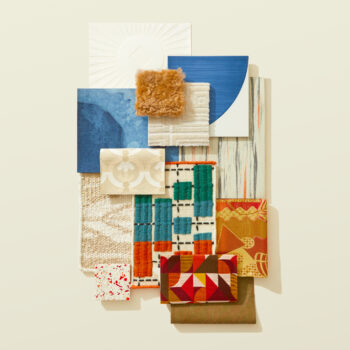
Mastering the art of mixing and matching different fabrics, from florals to stripes and solids, can transform an interior space with depth, vibrancy, and character. Skillfully layered patterns create visual interest, adding personality without overwhelming the senses. Achieving this balance requires attention to scale, color, and contrast, allowing these elements to complement each other while adding richness to the overall design.
When mixing patterns, it’s helpful to begin with a dominant fabric, often a larger, bolder print that sets the tone for the room. For example, a floral upholstery fabric in warm hues can act as the focal point for a space. This anchor pattern not only determines the palette but also provides inspiration for complementary textures and designs.
Once a dominant pattern is selected, a secondary print can be introduced, such as stripes or geometric shapes. A striped throw pillow or area rug adds structure to the softness of florals, providing visual variety without clashing. Choosing stripes with colors that echo tones from the main pattern ensures cohesion, creating a layered, intentional look.
Solids are essential for grounding mixed patterns and avoiding visual clutter. Upholstered furniture pieces, such as sofas or armchairs, in neutral shades like cream, gray, or muted tones, provide a backdrop that allows patterns to shine. These solid elements also allow the eye to rest, adding harmony to the design. Similarly, using neutral-colored drapes or rugs balances vibrant fabrics, offering a subtle framework.
Varying the scale of patterns adds a sophisticated layer to the design. If the floral print features large blooms, pairing it with smaller, more subtle stripes or checks keeps the space from feeling too busy. Using patterns with different scales allows each one to stand out while enhancing the overall composition.
Texture is another important factor in mixing patterns. Materials like velvet, linen, or cotton introduce a tactile layer, making the combination of patterns feel cohesive and multi-dimensional. A soft, textured solid fabric can add warmth to the crispness of stripes or geometric patterns, while smooth, sleek textures bring balance to intricate florals.
Successful pattern mixing involves balance and intention. By thoughtfully combining florals, stripes, and solids, you can create spaces that are lively yet harmonious, bold yet elegant. This approach allows for personal expression and creativity, resulting in interiors that feel carefully curated and uniquely yours.
Looking for more ways to mix and match colors, patterns, and textures into your space? Read our story on the Celebration of Maximalism.







